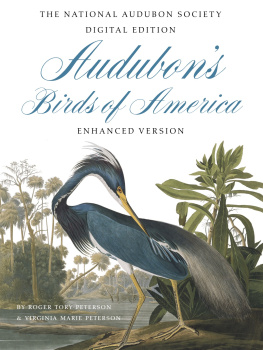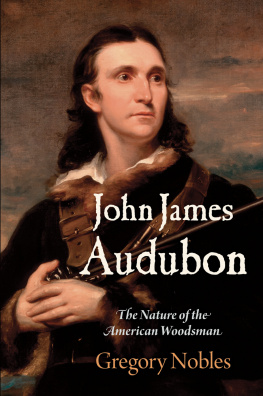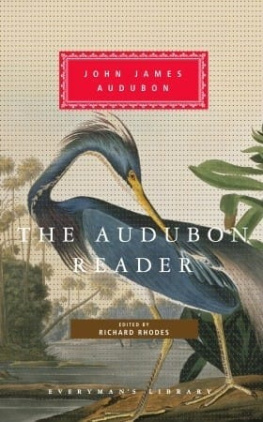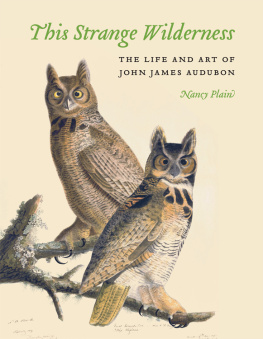
About Audubons Birds of America
A brilliant achievement. New York Times
Even before its completion in 1839, John James Audubons Birds of America was recognized as a masterpiece of both art and natural science; a great scientist of the day called it the most magnificent monument which has ever been raised to ornithology.
Roger Tory Peterson and Virginia Marie Petersons modern edition of the Birds of America , published with the full endorsement and cooperation of the National Audubon Society, is itself an acknowledged classic. Now, for the first time, it is available as an e-book.
All 435 of Audubons brilliant hand-colored engravings are presented in exquisite reproductions derived from the Audubon Societys own archival copy of the rare Double Elephant Folio. A generously illustrated introduction surveys Audubons career, as well as the history of American bird art before and after him. Descriptive captions, hyperlinks to authoritative species profiles, and a new, scientifically based arrangement of the prints allow us to appreciate Audubons achievement in the light of modern ornithology.
This enhanced version of the e-book also features high-quality embedded recordings of birdcalls from the Cornell Lab of Ornithologys Macaulay Library.
Roger Tory Peterson established himself as Americas leading ornithologist with his Field Guide to the Birds , first published in 1934. He received numerous honors, including the Presidential Medal of Freedom, for his contributions to natural history.
Virginia Marie Peterson was an expert on the detection and environmental effects of oil spills, and a contributor to the fourth and fifth editions of the Field Guide to the Birds .
This book is also available as a slipcased hardcover and a Tiny Folio.
To view our complete selection of e-books, visit www.abbeville.com/digital.

The Audubon mission is to conserve and restore natural ecosystems, focusing on birds, other wildlife, and their habitats for the benefit of humanity and the earths biological diversity.
Through its education, science, and public policy initiatives, Audubon engages people throughout the U.S. and Latin America in conservation. Audubons Centers and its sanctuaries and education programs are developing the next generation of conservation leaders by providing opportunities for families, students, teachers, and others to learn about and enjoy the natural world. The science program is focused on connecting people with nature through projects like Audubon at Home and Great Backyard Bird Count. Audubons volunteer Citizen Scientists participate in research and conservation action in a variety of ways, from monitoring bird populations and restoring critical wildlife habitat to implementing healthy habitat practices in their own backyards. Audubons public policy programs are supported by a strong foundation of science, environmental education, and grassroots engagement. Working with a network of state offices, chapters, and volunteers, Audubon works to protect and restore our natural heritage.
To learn how you can support Audubon, call 800-876-0994, visit www.audubon.org, or write to the National Audubon Society, 225 Varick Street, 7th floor, New York, NY 10014.
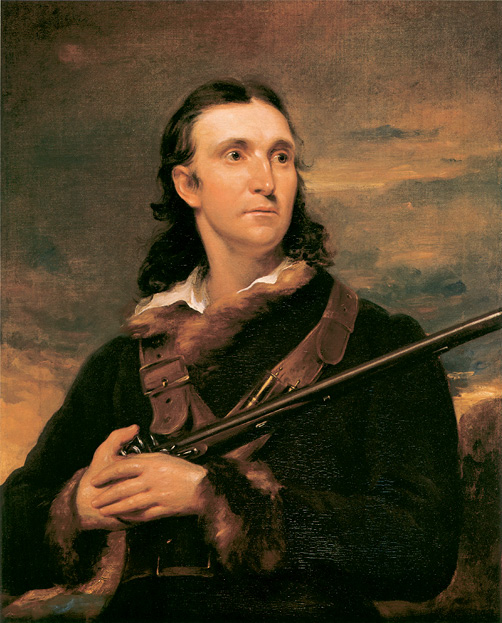
John James Audubon , by John Syme, 1826


The sounds in this book come from the Cornell Lab of Ornithologys Macaulay Library (www.macaulaylibrary.org), the world's largest collection of natural sounds and video. Visit the Cornell Labs All About Birds website (www.allaboutbirds.org) to learn more about the life history of nearly six hundred North American birds, listen to their sounds, and watch videos of their behavior. The Cornell Lab of Ornithology is a nonprofit, member-supported organization dedicated to interpreting and conserving the earth's biological diversity through research, education, and citizen science focused on birds.
CONTENTS
Loons, Grebes, Albatrosses, Fulmars, Shearwaters, Storm Petrels, Tropicbirds, Pelicans, Boobies, Gannets, Cormorants, Darters, Frigatebirds, Herons, Bitterns, Storks, Ibises, Spoonbills, and Flamingos |
Swans, Geese, and Ducks |
Vultures, Kites, Hawks, Eagles, Harriers, Osprey, Caracaras, and Falcons |
Grouse, Ptarmigan, Quails, Turkeys, Cranes, Limpkins, Rails, Gallinules, and Coots |
Oystercatchers, Stilts, Avocets, Plovers, Sandpipers, and Phalaropes |
Jaegers, Gulls, Terns, Skimmers, and Auks |
Pigeons, Parrots, Cuckoos, Owls, Nightjars, Swifts, and Hummingbirds |
Kingfishers, Woodpeckers, Tyrant Flycatchers, Larks, Swallows, Jays, Magpies, Crows, Titmice, and Nuthatches |
Dippers, Wrens, Mockingbirds, Thrashers, Thrushes, Gnatcatchers, Kinglets, Pipits, Waxwings, and Shrikes |
Vireos and Warblers |
Meadowlarks, Blackbirds, Orioles, Tanagers, and Finches |
Sequence of this edition related to original plate numbers
How to Use This Book
The Petersons have divided Audubons 435 plates into 11 chapters, each of which begins with a section of extended captions.
When viewing an extended caption, tap the image or title once to go to the corresponding plate.
When viewing a plate, tap the image once to go to the corresponding extended caption.
Tap any image twice to view it in a full-screen, zoomable format.
Tap the i icon to view a species profile in your web browser.
A Note About This Edition
T HIS BOOK DIFFERES IN A NUMBER OF WAYS from earlier editions of The Birds of America and from John James Audubons original, massive Double Elephant Folio, the heaviest volume of which weighs 56 pounds. These plates are organized not in the order that Audubon produced them for his subscribers but phylogenetically; that is, in a modern scientific classification sequence that somewhat parallels the evolutionary history of a genetically related group of organismsfrom the most primitive living examples to the most recently evolvedin this case going from loons to sparrows and buntings. The numbering of our plates roughly follows the sequence of orders, families, and species in the Checklist of North American Birds prepared by the American Ornithologists Union, as adapted and updated by the American Birding Association, but only roughly, as there have been many minor changes in sequence since 1981 when this book was first published. However, all common and scientific names are up to date as of 1990. It is instructive to see the bird paintings grouped in this manner, to compare Audubons handling of closely related species and to note that he sometimes repeated a typical pose, as in his storm-petrels, rails, and warblers.
In the Appendix, we have included a two-way Concordance relating our numbers to the numbering of plates in the original Elephant Folioas well as an Index to the birds illustrated.
The plates are captioned with each birds currently accepted vernacular name, followed in brackets by Audubons identification (in original spelling and capitalization) when it differs. In addition, each plate carries the birds scientific classification by order, family, and species. The narrative captions grouped at the beginning of each chapter are illustrated by thumbnail images of the plates for ease of reference, but no attempt has been made to give well-rounded summaries of life histories, habits, or ranges of each bird; such information can be found in more extended form in any number of standard bird books.
Next page
